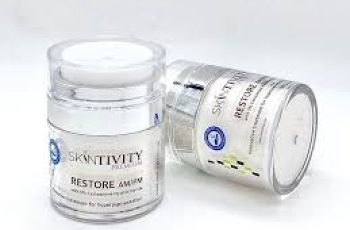
Can I mix AHAs with Azelaic Acid?
I wouldn’t be surprised if you’re wondering what exactly azelaic acid is and how it can benefit your skin. The beauty industry is filled with powerful and effective ingredients, so the idea of adding another one shouldn’t be too concerning. Lastly, azelaic acid is notoriously a well-kept secret among skincare enthusiasts, meaning you can usually only find it in specialty treatments or niche skincare brands.
If you’re wondering what the benefits of azelaic acid are, you can read our dedicated blog post about it and how it works on your skin. However, today’s post will take a closer look at whether or not you can mix AHAs with azelaic acid.
Can I use azelaic acid with AHAs?
Yes, you can, as it’s known to work well with other skin ingredients, even with stronger ingredients like the popular AHAs B. glycolic acid and lactic acid. Don’t let the name fool you, as it’s not as aggressive as you might think. In fact, azelaic acid is safe and effective for nearly all skin types, even those prone to rosacea. Due to its anti-inflammatory and antibacterial properties, azelaic acid is also very effective for treating acne-prone skin without stripping the skin of sebum, which often leads to excessive oil production and an endless cycle of constant breakouts and acne breakouts. However, using azelaic acid as a single ingredient is not considered the best solution for treating acne and must be combined with other moisturizing and nourishing ingredients, such as hyaluronic acid and niacinamide, to counteract the typically drying effects of azelaic acid.
What Shouldn’t AHAs Be Mixed With?
To avoid unnecessary skin irritation, do not mix AHAs with the following skincare ingredients.
BHAs, Like Salicylic Acid
This is because applying both acids to the skin is too irritating. BHAs, such as salicylic acid, are oil-soluble and can penetrate deeper into the skin than AHAs, such as glycolic acid. AHAs work on the outer surface of the skin to remove the buildup of dead skin cells, debris, bacteria, and other impurities. However, there is nothing wrong with using these ingredients in your daily routine. All you need to do is alternate the ingredients at different stages of your daily skincare routine.
Retinol
Retinol is known to speed up the skin cell renewal cycle, which can often make the skin feel dry and irritated. To prevent your skin from becoming more irritated, it’s best to use a skincare product rich in fruit acids, such as glycolic acid, in the morning and save the retinol for the evening.
Vitamin C
Vitamin C has an exfoliating effect on the skin. However, combining it with products rich in alpha hydroxy acids and vitamin C can lead to over-exfoliation and skin irritation.
If you want to learn more about what not to mix with AHAs, you can read the blog post which explains in more detail how to easily and effectively use these ingredients in your daily skincare routine.
Can I mix niacinamide with azelaic acid?
Absolutely! Azelaic acid and niacinamide are known to work well together. The moisturizing properties of niacinamide ensure that moisture is drawn into the skin around the face and locked there. You’ll also find that niacinamide ensures that pores are refined and the skin’s protective barrier is strengthened and functioning properly.
For best results, it’s best to use a product rich in azelaic acid first and then a serum containing niacinamide to reduce the risk of the acid drying out and irritating the skin.
Can I use Azelaic Acid with Glycolic Acid?
Yes, you can use Azelaic Acid and Glycolic Acid together. Many people find the combination of the two to be a great alternative to the highly effective skin ingredient, Retinoic Acid. By using Azelaic Acid and Glycolic Acid together, your skin will get the same effects as Retinoic Acid, but it will be easier for your skin to tolerate.
Using Azelaic Acid and Glycolic Acid together will make your skin feel younger, smoother, plumper, more vibrant, and improve your skin tone overall. If you want to learn more about combining these powerful ingredients, read the blog post “Can I use Azelaic Acid and Glycolic Acid together?”
Where do you use Azelaic Acid in your daily routine?
You’ll often find Azelaic Acid in a variety of skincare products. The basic rule of skincare is to apply products in order from thinnest to thickest. Products containing Azelaic Acid are typically serums and moisturizers and should be applied to the skin later in your routine. For best results, it’s best to apply Azelaic Acid after using a cleanser and exfoliating toner to remove all bacteria, debris, and dirt. This way, any formula you apply afterwards will be quickly absorbed and penetrate into the lower layers of the skin.
Can Azelaic Acid be used daily?
Azelaic acid can be used twice daily, even for those with sensitive skin that is prone to certain conditions such as rosacea. Unlike other acids, skin tolerance is easy to build up and doesn’t take too long. You can also increase the number of days per week that you apply the acid to your skin.
Does Azelaic Acid Cause Rash?
Yes, Azelaic Acid can cause rashes because skin cell turnover is increased rapidly, which purifies the skin. Skin clearing is often mistakenly thought of as acne, even though it is clearly a sign of thorough cleansing of the skin by pushing dirt, excess sebum, and debris from the pores to the surface. Continue using your products and you will notice that after 4 weeks, your skin will become clearer and have an overall healthy glow.
You can learn more about the AHA and Azelaic Acid combination here. Remember, if you have any concerns, it’s always best to consult a doctor or dermatologist. Follow us on Instagram for any other skincare questions you have.


